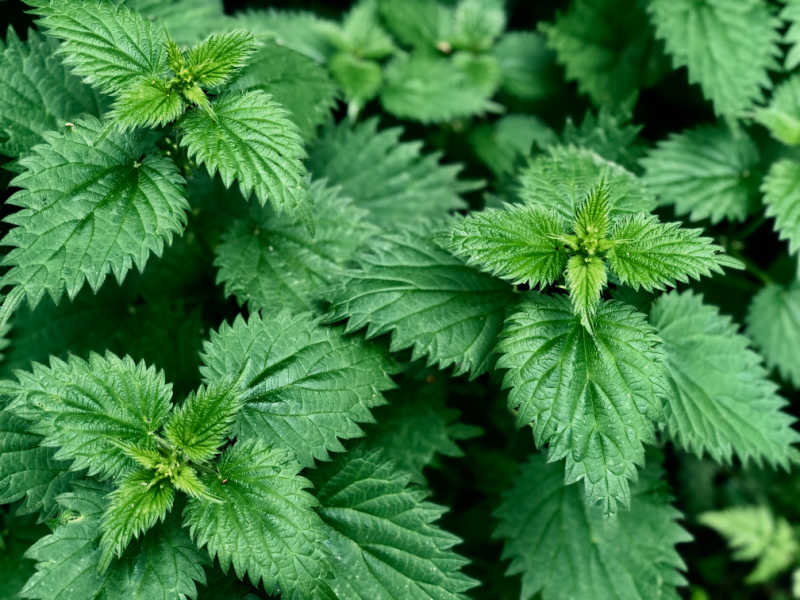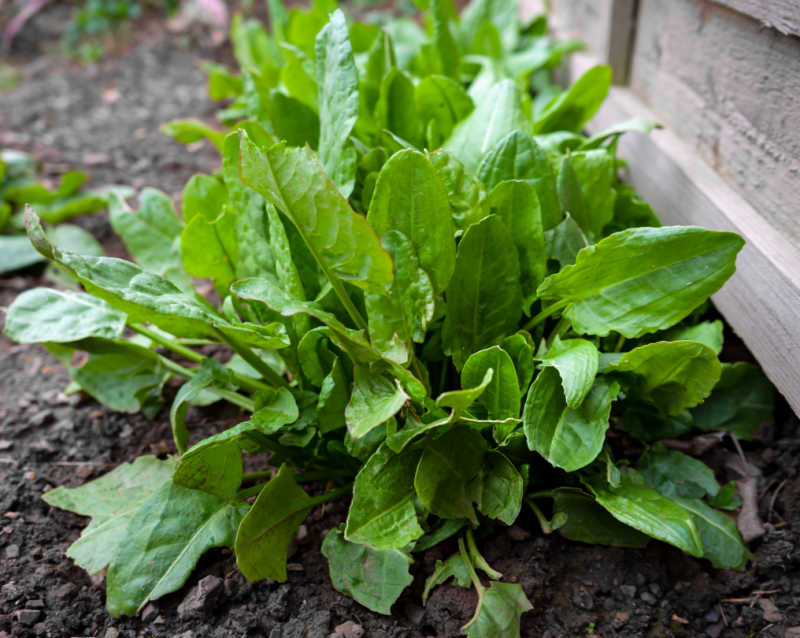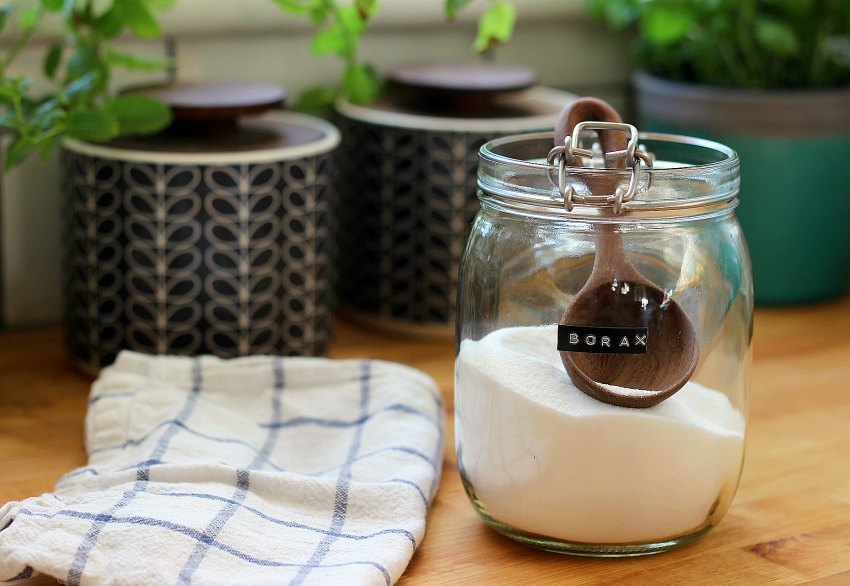The Beneficial Weeds You Want In Your Garden
To support the running costs of Moral Fibres, this post may contain affiliate links. This means Moral Fibres may earn a small commission, at no extra cost to readers, on items purchased through these links.
Put that spade and pair of secateurs down! Before you do any weeding at all, have a read about the beneficial weeds you want in your garden that help the environment, and support wildlife. You can even eat some of them too!
It’s time we changed how we look at gardening. With the Royal Horticultural Society (RHS) no longer classing slugs and snails as pests – instead urging people to consider these creatures as an important part of the garden ecosystem – it’s high time we did the same with weeds.
It was Ian Emberson who wrote the words “A weed is a flower in the wrong place, a flower is a weed in the right place”. Instead of waging war on the flowers in the wrong place, let’s change how we look at them. Many weeds after all are beneficial to the environment, our gardens, and wildlife. Surprisingly, many weeds are edible too.
The Beneficial Weeds You Want In Your Garden

In the UK, our collective private gardens cover an area of land that is bigger than all of the country’s nature reserves combined. That’s a huge area and means our gardens have great potential to provide vital space for wildlife.
We can start to make positive changes, just by changing how we view weeds.
Here are just some of the beneficial weeds you want in your garden, that all help to support our native wildlife. Many of these weeds are also beneficial when it comes to growing fruit and vegetables, and many are also edible. Of course, do consult a book on foraging or an app if you have any doubts about identifying edible types of weeds before you eat them:
Nettles

Top of the list is nettles. Nettles are an amazing beneficial weed because these stinging plants support an array of wildlife. Butterflies, such as the Red Admiral and Small Tortoiseshell, and moths lay their eggs on nettles. Meanwhile, caterpillars, aphids and other insects all eat nettles. In fact, nettles can support over 40 types of insects.
However, it’s not just insects that benefit from the presence of nettles. A host of other wildlife is attracted to nettles because they like to eat the insects that gorge on nettles. Ladybirds, parasitic wasps, hedgehogs, frogs, toads, shrews, and birds such as blue tits, all visit to feast on these insects and aphids. It’s a veritable feeding frenzy!
In the autumn, nettles provide a further feast. Small birds, including the sparrow, chaffinch, and bullfinch come to feast on the seeds which each nettle plant produces.
Companion Planting With Nettles
If you grow your own fruit and vegetables, then nettles make for great companion plants. This is because growing clumps of nettles between crops help to attract beneficial predators, such as ladybirds. These will help to control pests naturally, without the use of harmful pesticides.
Eating Nettles
You can also eat nettles. In spring you can make delicious wild nettle pesto with the tips of the spring shoots. A word of warning though – don’t pick nettle leaves after they have started flowering – usually around late May. Once nettles start flowering, a chemical in the leaves can upset your urinary tract. Consider nettles a springtime treat, and for the rest of the year leave them for wildlife to enjoy.
Sorrel

You might class sorrel as an annoyance that pops up on your lawn, but it’s actually a pretty beneficial weed to have in your garden.
Sorrel is beloved by slugs, snails and aphids, and some species of butterfly and moth larvae feed on the leaves too. This in turn attracts other wildlife, which then eats these creatures.
Companion Planting With Sorrel
Sorrel also makes a great companion plant when growing strawberries, cabbages or tomatoes. This simple but clever technique works by creating a diversion and drawing pests away from the main fruit and vegetable plants you are trying to protect.
Eating Sorrel
Most types of sorrel are also edible. Young sorrel leaves can be used as a herb, or as a salad leaf. Sorrel has a very fresh and zingy flavour, that is reminiscent of that of the zest of a lemon. This flavour really lifts a dish naturally. Because of this, sorrel has become one of my favourite things to grow in my garden. Eat the leaves when they are young though – I find that the larger they get, the leaves take on more of a woody texture which isn’t so tasty.
With so many beneficial properties, I promise, you’ll soon view sorrel as a plant, rather than a weed.
Dandelions

Dandelions have long been a scourge of gardeners. Those long taproots that are difficult to remove from the ground mean that dandelions just keep popping up when you don’t want them. However, dandelions do make for an incredibly beneficial weed.
Dandelions provide food to many different pollinators. This includes bumblebees, solitary bees, hoverflies, butterflies and some species of moths and beetles. As one of the first plants to flower in spring and the last to flower in autumn, dandelions are incredibly important to our pollinators. They are particularly important in early spring when some of these species emerge hungry from hibernation.
Other species in turn eat these insects, whilst later on in the year, birds such as goldfinches and house sparrows munch the dandelion seeds.
Companion Planting With Dandelions
Whilst you may think you don’t want dandelions growing in your vegetable garden, then I encourage you to think again. Far from being just weeds, dandelions make a fantastic beneficial companion plant to have in your garden.
As well as attracting pollinating insects to your vegetable patch, the dandelion’s long taproots help to break apart hard soils. These roots are also said to bring up nutrients from deep down in the soil to the surface. This helps to nourish other plants growing nearby.
Interestingly, dandelions also release ethylene gas. If grown near fruit or tomatoes, this gas that they give off can help speed up the ripening process.
Eating Dandelions
It’s a little-known fact that dandelions are edible. The petals can be eaten raw in salads, or you can boil them in sugar to make dandelion syrup – also known as vegan honey. The leaves again can be eaten raw in salads or boiled to be eaten as a substitute for spinach. Some people even bake the roots and ground them down to use as a coffee substitute. Do check out my guide to dandelion recipes for a huge list of ideas and recipes.
Wild Carrot

Whilst wild carrot has historically been classed as a weed, this beautiful plant is beneficial to a host of insects, such as bees, beetles and hoverflies. Its ferny foliage and white flowers mean it looks great growing in your garden borders too.
Companion Planting With Wild Carrot
Planting wild carrots helps to attract hoverflies to your garden. Hoverflies are a great garden guest to have, as they eat the aphids that like to feast on your prize vegetables. Hoverflies have short tongues so they need accessible flowers where they can drink nectar. Wild carrot is an accessible flower for hoverflies, so you can naturally reduce your aphid populations without resorting to pesticides.
Eating Wild Carrot
Whilst the young roots of wild carrots are edible, as well as the flowers, I prefer to give them a wide berth. This is because wild carrots are very similar in appearance to other members of the same family, such as the highly poisonous hemlock plant and the poisonous hemlock water-dropwort plant. Personally, I would reserve wild carrots as a beneficial weed for the wildlife to enjoy.
So let’s put down the weedkiller, put down that spade, and embrace the weeds to make your garden an insect and animal-friendly oasis. Of course, you don’t have to turn your whole garden over to weeds – simply allowing one small patch or a couple of tubs to grow wild can make a huge difference to our native wildlife. If you are worried about being overrun by dandelions, simply cut the flower heads off before they go to seed.
Found this post useful? Please consider buying me a virtual coffee to help support the site’s running costs.




